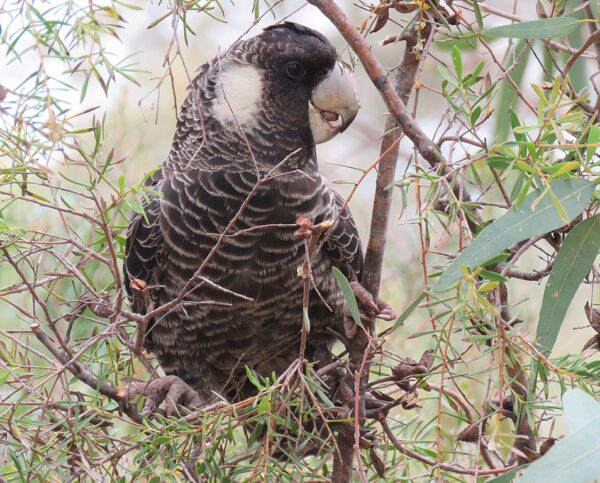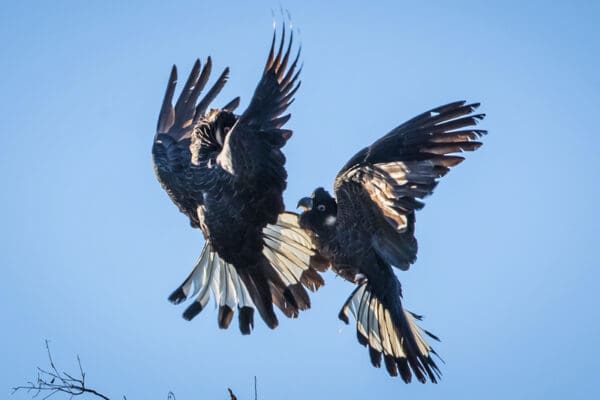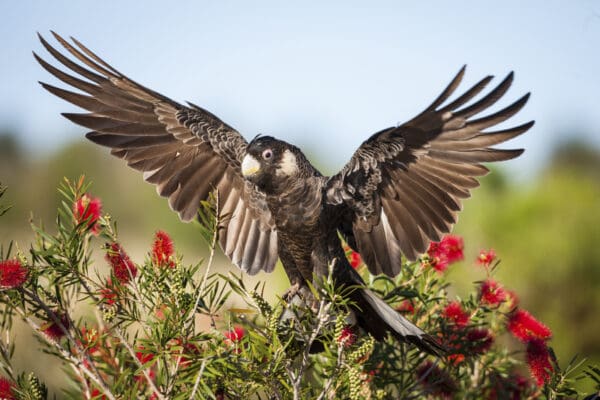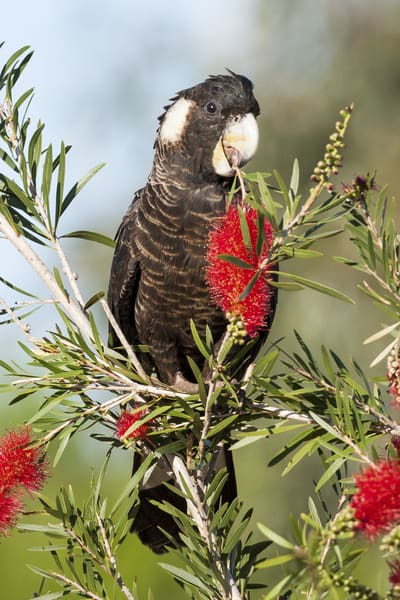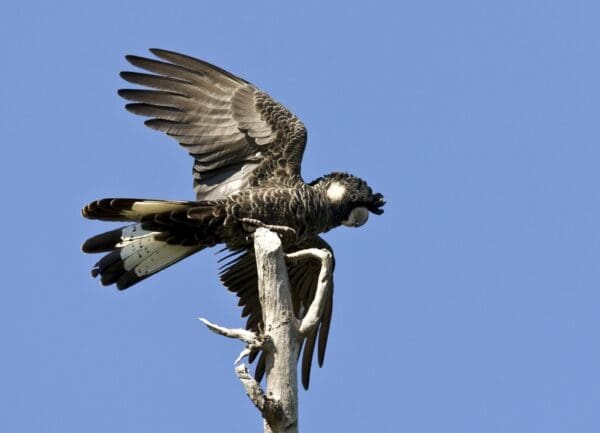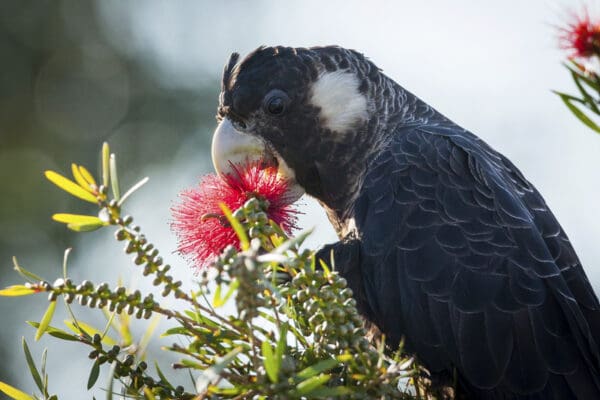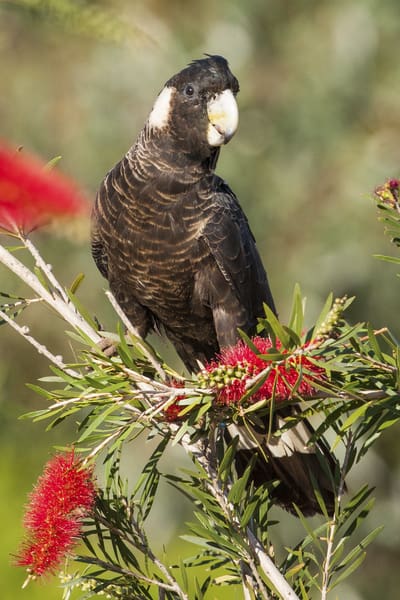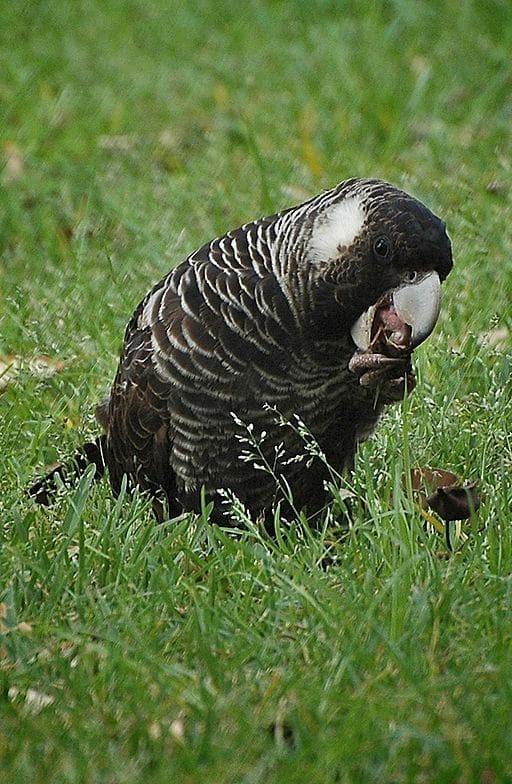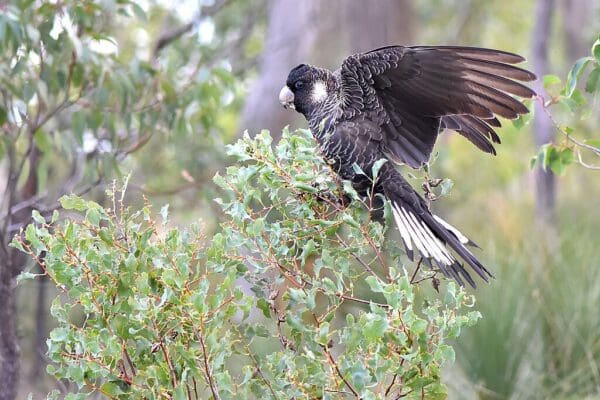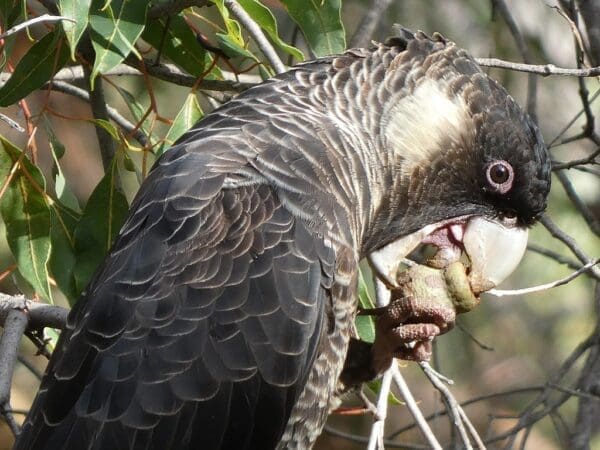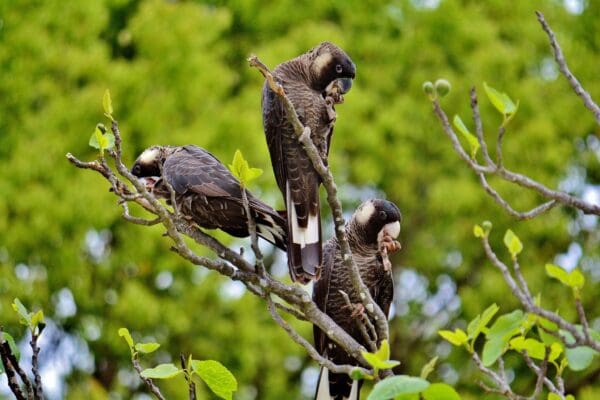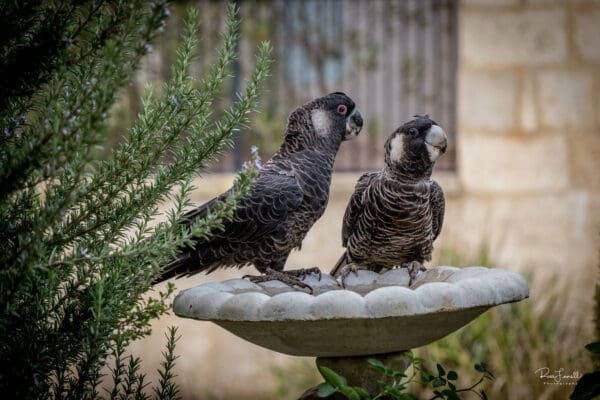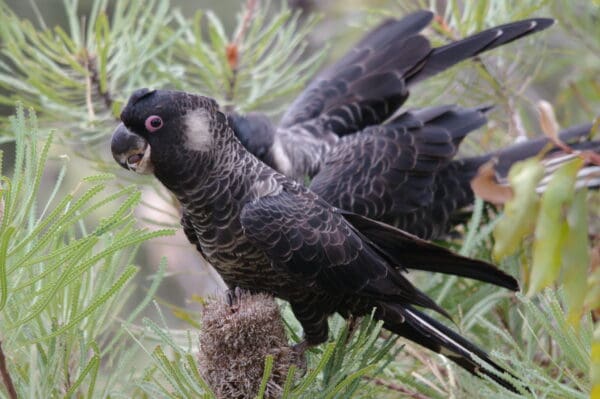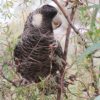
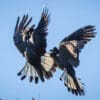
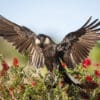
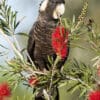
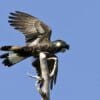
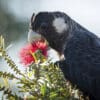
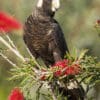
![© Helenabella (Own work) [CC BY-SA 3.0] via Wikimedia Commons A wild Carnaby's Black Cockatoo feeds](https://gt2024.parrots.org/wp-content/uploads/2023/01/wpt_Carnabys-Black-Cockatoo_1126-100x100.jpg)
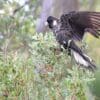
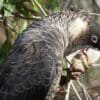
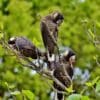
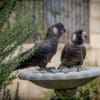
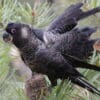
DID YOU KNOW?
Possible competition from increasing numbers of Galahs (Eolophus roseicapilla) for nest hollows is thought to be an issue.

Zanda

latirostris
Size:
55-60 cm (21.5-23.4 in)
Weight:
540-760 g (19.0-26.6 oz)
Subspecies including nominate:
one
Colour Adult:
Male-large cockatoo, brown/black, white tail patches, white edgings to back of crown, ear coverts and throat; grey/white patch on rear ear coverts. Wings black with brown/white edgings. Tail side feathers with broad white band. Pink around eye. Beak dark grey. Eye brown. Female-broader and paler grey/white edgings to feathers, looking scalloped, area around eye grey, ear coverts larger and whiter, side feathers of tail with narrower white tail band. Beak light grey.
Colour Juvenile:
As in adult but with dull white ear coverts; narrow white tail band. Area around eye grey.
Call:
High-pitched and drawn out whistle. Alarm call harsh screech. Fledged youngsters give constant wheezing sound.
More Information:
Content Sources:
CITES
BirdLife International
Cornell Lab of Ornithology/Birds of the World
Parrots: A Guide to Parrots of the World, Juniper and Parr, 1998
Parrots: Status Survey and Conservation Plan 2000-2004, Snyder, McGowan, Gilardi and Grajal, 2000.
Parrots of the World, Forshaw and Cooper, 1989. 2010 edition
Vanished and Vanishing Parrots, Forshaw, 2017.
Parrots of the World, Forshaw, 2006.
Lexicon of Parrots, Thomas Arndt.
Captive Status:
Uncommon
Longevity:
25-50 yrs
Housing:
Walk-in enclosure, minimum length 7 m (23 ft).
Diet:
Nuts, including walnuts, almonds and pine nuts; sunflower seed, wheat, maize and fresh corn, peas in the pod; vegetables, green foods and fruit (except orange) are not eaten by many birds; nutritionally complete kibble; also if available mealworms for rearing young.
Enrichment:
Provide lots of bird-safe chewables such as flowering (non-sprayed) branches, fir, pine; also vegetable tanned leather chew toys; overhead misters for bathing.
Nest Box Size:
Nestbox or log: 28-40″ (71 cm-131 cm) x 14-16″ (35.5 cm-52.5 cm).
Clutch Size:
1 to 2
Fledging Age:
11-12 weeks
Hatch Weight:
—
Peak Weight:
—
Weaning Weight:
—
World Population:
About 34,000 individuals, very rapidly declining.
IUCN Red List Status:
Endangered
CITES Listing:
Appendix II
Threat Summary:
The population has likely declined by >50%–79% over the last three generations. Since the 1950s, over 80% of the feeding habitat for breeding birds has been cleared for agriculture. Remnants are fragmented and degraded by domestic livestock, with productive feeding areas now increasingly distant from nesting sites. Nest-hollow availability is likely to become limited in the future with feral bees and other cockatoos competing for hollows. Egg and chick poaching, although declining, has resulted in the loss of nest trees. A new concern is that many pine plantations, on which birds depend in the non-breeding season, are almost ready for wholesale harvest. Recent heatwaves felled almost 200 birds.
Range:
Restricted to SW Australia, inland.
Habitat:
Proteaceous scrubs and heathlands, and adjoining eucalypt woodlands. Also forays into drier mallee and scrublands.
Wild Diet:
Diet includes seeds of native Banksia, Dryandra and also Pinus radiata. Also flowers of a wide variety of heathland plants and others, including Allocasuarina, Hakea, Grevillea and Corymbia calophylla, as well as insect larvae and wild geranium Erodium.
Ecology and Behaviour:
Pairs form permanent bonds, large flocks form outside breeding season; sometimes seen with Red-tailed Black Cockatoos. Noisy and conspicuous in groups.
Clutch and Egg Size:
1 to 2, ovate eggs, 50 x 35 mm (2 x 1.3 in)
Breeding Season:
July–November or August–December. Nest is a bed of woodchips in a large tree hollow.
